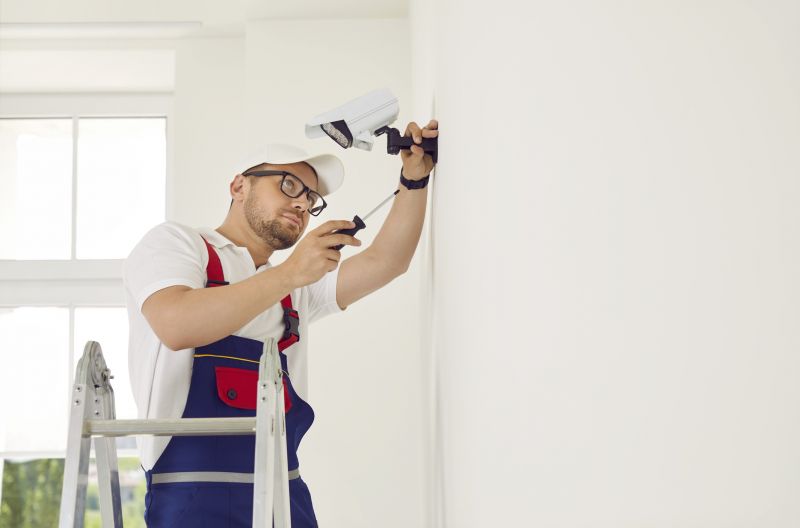Expert Picks Of Leading Products For Flashing Installations
Get insights into top-performing flashing products that combine quality, ease of installation, and reliable waterproofing.
 Flashing installations are a critical component in construction and renovation projects, serving as protective barriers that prevent water intrusion and moisture damage around openings such as windows, doors, chimneys, and vents. Proper flashing ensures the integrity of the building envelope by directing water away from vulnerable areas, thereby helping to maintain structural durability and interior dryness. Selecting the right products for flashing installations involves understanding the various materials, designs, and compatibility factors that contribute to effective sealing and weatherproofing.
Flashing installations are a critical component in construction and renovation projects, serving as protective barriers that prevent water intrusion and moisture damage around openings such as windows, doors, chimneys, and vents. Proper flashing ensures the integrity of the building envelope by directing water away from vulnerable areas, thereby helping to maintain structural durability and interior dryness. Selecting the right products for flashing installations involves understanding the various materials, designs, and compatibility factors that contribute to effective sealing and weatherproofing.
Top Overall Option
Flexible Waterproof Flashing Membrane
A versatile and durable flashing membrane made from high-quality, self-adhesive materials that conform easily to various surfaces. Its flexibility allows for seamless installation around irregular shapes and corners, providing an effective barrier against water intrusion. Designed to withstand UV exposure and temperature variations, it offers long-term performance in diverse conditions. This type of flashing membrane is suitable for various applications, including roof edges, skylights, and wall penetrations, making it a reliable choice for many projects.
Types of Products For Flashing Installations
Metal Flashing Strips
Thin sheets of metal designed to be shaped and installed around roof edges, chimneys, and window sills for durable water protection.
Self-Adhesive Waterproof Membranes
Flexible, peel-and-stick membranes that conform to surfaces and provide an effective seal against moisture ingress.
Rubberized Flashing Sheets
Flexible rubberized materials ideal for irregular surfaces and detailed flashing around vents and penetrations.
Aluminum Flashing
Lightweight, corrosion-resistant aluminum sheets suitable for a variety of flashing applications, especially in coastal or humid environments.
PVC Flashing Components
Polyvinyl chloride-based flashing products that are easy to cut and install, often used in roofing and siding applications.
Pre-Formed Corner Flashings
Pre-shaped flashings designed to fit corners and angles for quick and precise installation.
Lead Flashing Sheets
Traditional lead sheets used for their malleability and long-lasting performance around chimneys and roof penetrations.
Bituminous Flashing Rolls
Asphalt-based rolls suitable for roofing applications, offering waterproofing and weather resistance.
Flexible Sealant Tapes
Adhesive tapes designed to seal seams and joints in flashing systems, enhancing waterproofing.
Butyl Rubber Flashing Tape
Sticky, resilient tape ideal for sealing around vents, pipes, and irregular surfaces.
Vinyl Flashing Strips
Cost-effective and easy-to-install strips suitable for various flashing needs in residential projects.
Polyethylene Flashing Sheets
Lightweight and flexible sheets that resist moisture and are suitable for various roofing and siding applications.
Composite Flashing Panels
Multi-layered panels combining different materials for enhanced durability and weather resistance.
Flexible Butyl Sealant Tape
High-performance tape that remains pliable and adheres well to various surfaces for sealing joints and seams.
Popular Choices
Widely used for their ease of application and reliable sealing around roof penetrations and wall openings.
Commonly selected for their durability and compatibility with various roofing materials.
Popular for their adaptability to complex shapes and detailed flashing around vents and chimneys.
Often chosen for ease of installation in corners and around irregular surfaces.
Favored for their affordability and straightforward installation in roofing projects.
A popular choice for its light weight and resistance to corrosion, suitable for various climates.
Traditional option appreciated for its malleability and long-lasting performance around chimneys.
Commonly used for roofing waterproofing and weatherproofing applications.
Selected for sealing seams and joints in various flashing systems due to their adhesive qualities.
Trusted for its resilience and strong adhesion around penetrations and irregular surfaces.
A common choice for residential projects due to ease of handling and installation.
Popular for their moisture resistance and flexibility in various roofing applications.
Different environments and building types require specific types of flashing materials to withstand local weather conditions and structural demands. For example, metal flashings are often chosen for their durability and ease of installation in high-moisture zones, while flexible membranes may be preferred for intricate or irregular surfaces. Proper installation techniques, combined with high-quality products, are essential to achieve long-lasting results. It is important to consider factors such as material compatibility, UV resistance, flexibility, and ease of handling when choosing flashing components.
In addition to material considerations, the size, shape, and design of flashing products should align with the specific application. Customizable options and pre-formed shapes can simplify installation and improve sealing effectiveness. Regular inspection and maintenance of flashing systems can help identify potential issues early, preventing costly repairs in the future. Overall, investing in the appropriate flashing products and understanding their features can significantly enhance building resilience against water infiltration and related damages.
Key Buying Considerations
- Material compatibility with existing roofing or siding materials
- Weather resistance and UV stability for prolonged outdoor exposure
- Flexibility to conform to irregular surfaces and shapes
- Ease of installation, including adhesive or fastening requirements
- Durability and long-term performance in local climate conditions
- Resistance to corrosion, especially in humid or coastal environments
- Compatibility with other flashing or sealing components
- Ease of cutting and shaping for custom applications
- Availability of pre-formed shapes for corners and penetrations
- Cost-effectiveness relative to project budget and longevity
- Adherence to local building codes and standards
- Ease of inspection and maintenance over time
- Resistance to thermal expansion and contraction
- Environmental exposure factors such as wind, rain, and snow
- Compatibility with insulation and other building envelope components
